Harnessing Movement to Enhance Cognitive and Emotional Resilience
Harnessing Visual Strategies to Enhance Problem-Solving Skills
Incorporating visual strategies into problem-solving instruction offers a dynamic approach that embraces diverse learning styles and promotes deeper understanding. Visual tools such as diagrams, flowcharts, and concept maps make complex ideas accessible, improve engagement, and foster critical thinking. This article explores effective methods, research-backed practices, and practical resources to teach problem-solving through visual means, ensuring learners develop strong, transferable skills.
Incorporating Visual Strategies into Problem-Solving Instruction
Visual strategies play a vital role in enhancing problem-solving skills across various educational levels. Teachers can incorporate these methods by utilizing diverse visual tools such as diagrams, flowcharts, mind maps, and concept maps. These tools serve to represent complex problems visually, helping students recognize relationships, organize their ideas, and simplify intricate concepts.
Flowcharts and diagrams are especially helpful in mapping out step-by-step processes, allowing students to follow logical sequences easily. Mind maps and concept maps enable learners to connect ideas, visualize hierarchies, and see how different elements relate to one another. For example, students working on a science project can use concept maps to outline hypotheses, variables, and results.
In addition to static visuals, engaging in visual literacy activities enhances understanding. Activities like analyzing images, infographics, and illustrations promote observation skills and foster critical thinking. Creating visual explanations or infographics helps students synthesize information and communicate their understanding clearly, which is particularly valuable in STEM education.
Incorporating these visual strategies supports diverse learning needs. Visual learners benefit from images, colors, and spatial arrangements that help retain information. Moreover, visual tools can make abstract mathematical or scientific concepts more concrete for students with learning disabilities.
By integrating these visual approaches into daily lessons, educators not only make learning more engaging but also foster deeper comprehension and independent problem-solving abilities. For example, students might develop their own visual aids to explain concepts during presentations, reinforcing their understanding and giving them a sense of ownership over their learning process.
Overall, effective implementation of visual strategies involves not just using the right tools but also explicitly teaching when and how to apply them. Combining visual representations with discussion, modeling, and practice ensures that students develop essential skills in analyzing, reasoning, and communicating solutions effectively.
Common Visual Representations Utilized in Problem-Solving
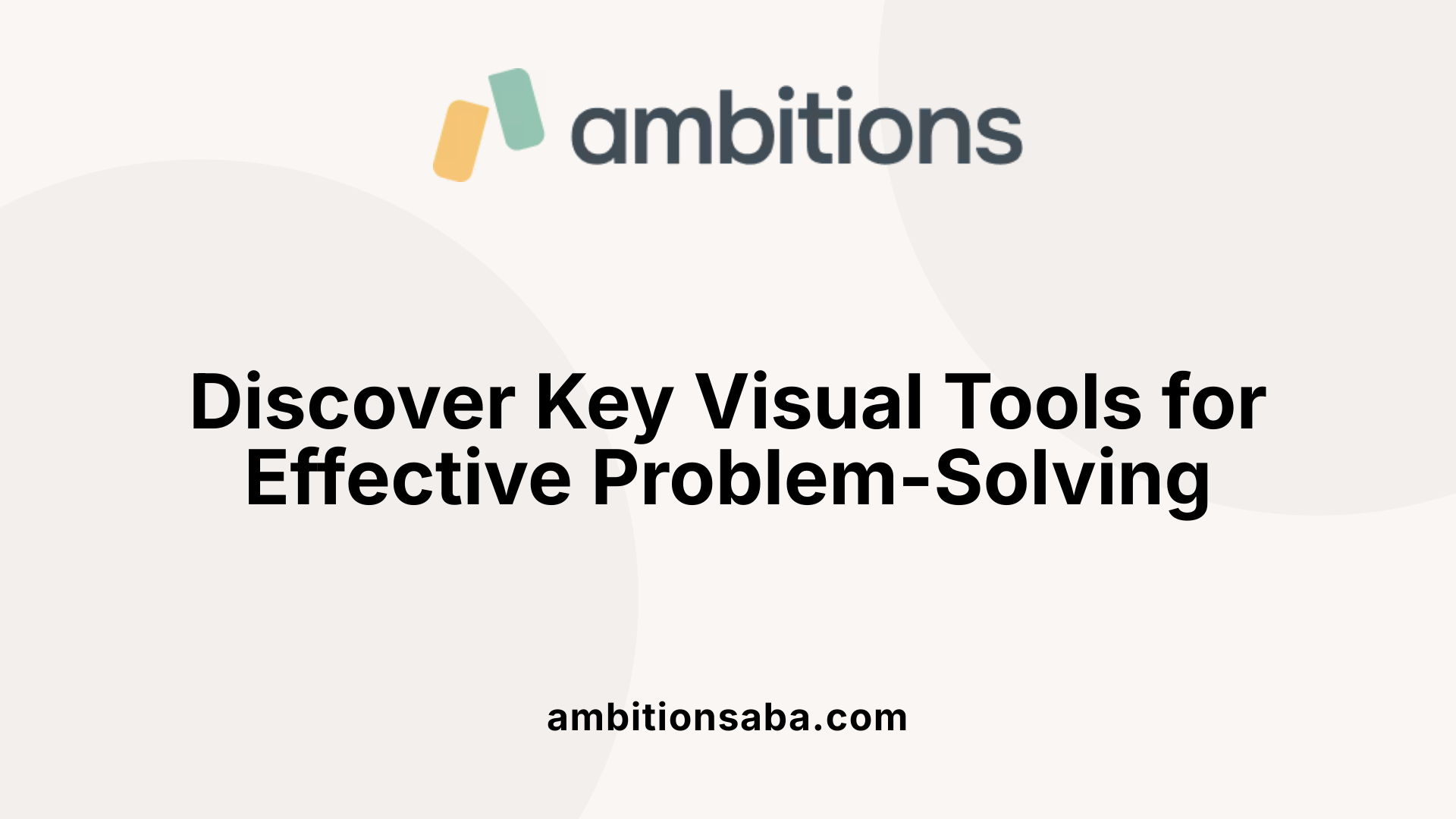 Visual representations are vital tools that help students organize information, understand relationships, and clarify what a problem asks. Some of the most common visuals include tables, number lines, strip diagrams, and percent bars. These tools allow students to break down complex problems into understandable parts, see patterns, and develop strategies independently.
Visual representations are vital tools that help students organize information, understand relationships, and clarify what a problem asks. Some of the most common visuals include tables, number lines, strip diagrams, and percent bars. These tools allow students to break down complex problems into understandable parts, see patterns, and develop strategies independently.
Schematic diagrams and graphic organizers like mind maps and concept maps further assist students in visualizing connections between ideas. For example, T-charts and Venn diagrams are excellent for comparing concepts or organizing information before solving a problem.
Manipulatives and pictorial representations provide concrete visual aids, especially beneficial for lower-grade students or those struggling with abstract concepts. These include physical objects like blocks and drawing tools that help create mental models, making understanding more accessible.
As students progress, they move from concrete to more abstract understanding, often guided by structured frameworks such as the CRA (Concrete-Representational-Abstract). This approach systematically connects hands-on manipulatives to visual models and finally, to abstract symbols.
Consistent use of visuals not only improves comprehension but also enhances problem-solving skills. When students can explain why a particular visual helps them, they develop deeper insight into mathematical reasoning. Teachers who model think-aloud strategies while illustrating how and why to select specific visual tools help students learn to communicate their reasoning clearly.
In sum, employing a variety of visual tools—from simple diagrams to complex schematics—supports learners across grade levels. They foster critical thinking, build confidence, and pave the way towards mastery of abstract mathematical concepts.
Research-Based Methods and Techniques for Visual Teaching
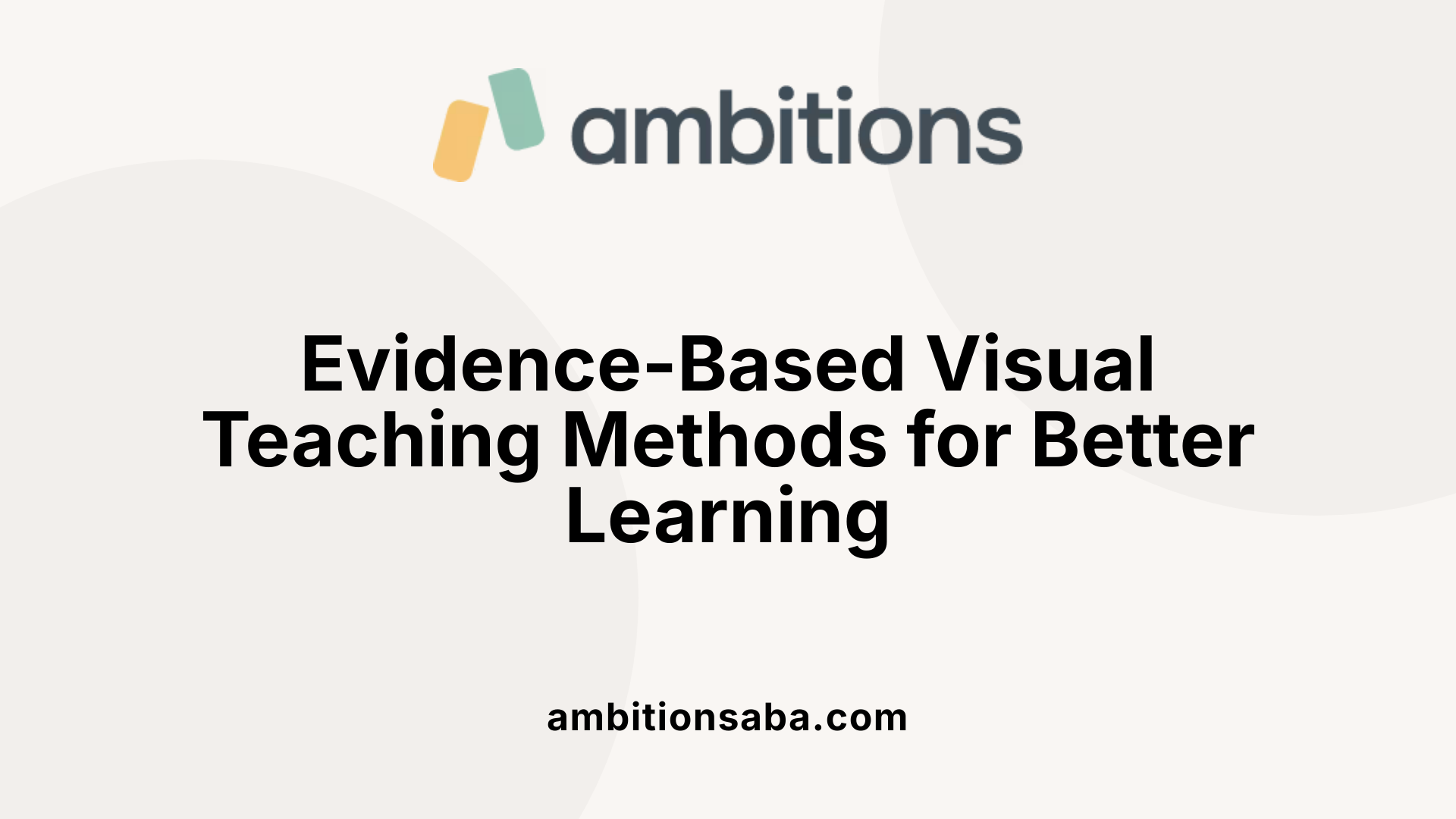 Using visual representations in teaching greatly benefits students’ understanding and problem-solving skills. Research shows that diagrams, graphic organizers, and other visual aids help students organize information, distinguish relevant data, clarify objectives, and see relationships between concepts. These tools make complex ideas more accessible, especially in mathematics and science.
Using visual representations in teaching greatly benefits students’ understanding and problem-solving skills. Research shows that diagrams, graphic organizers, and other visual aids help students organize information, distinguish relevant data, clarify objectives, and see relationships between concepts. These tools make complex ideas more accessible, especially in mathematics and science.
One effective approach is the use of visual thinking strategies (VTS), a method developed through research to develop observation, inference, and reasoning skills. VTS involves engaging students with carefully selected images, encouraging them to observe, interpret, and discuss what they see collaboratively. This guided dialogue promotes critical thinking and deepens understanding.
Digital tools also play a significant role. Videos, virtual whiteboards, and interactive activities can reinforce visual learning by capturing attention and making abstract concepts tangible. For example, animations and simulations can demonstrate mathematical processes or scientific phenomena, fostering clearer comprehension.
Explicit instruction on creating and using visual representations is crucial. Teachers can model how to construct accurate diagrams, models, or concept maps, explaining why specific visuals are appropriate. This systematic approach helps students develop confidence and independence in problem-solving.
Effective visual teaching strategies are backed by research demonstrating their impact. For instance, research conducted in Singapore shows that visual models like tape diagrams and bars significantly increase success in solving word problems.
In conclusion, combining visual aids, guided discussions, digital media, and explicit instruction creates a powerful framework that enhances students’ problem-solving capabilities. When students learn to articulate their reasoning visually, they build a stronger conceptual understanding, which is essential for success in STEM and beyond.
Supporting Students with Learning Disabilities through Visual Tools
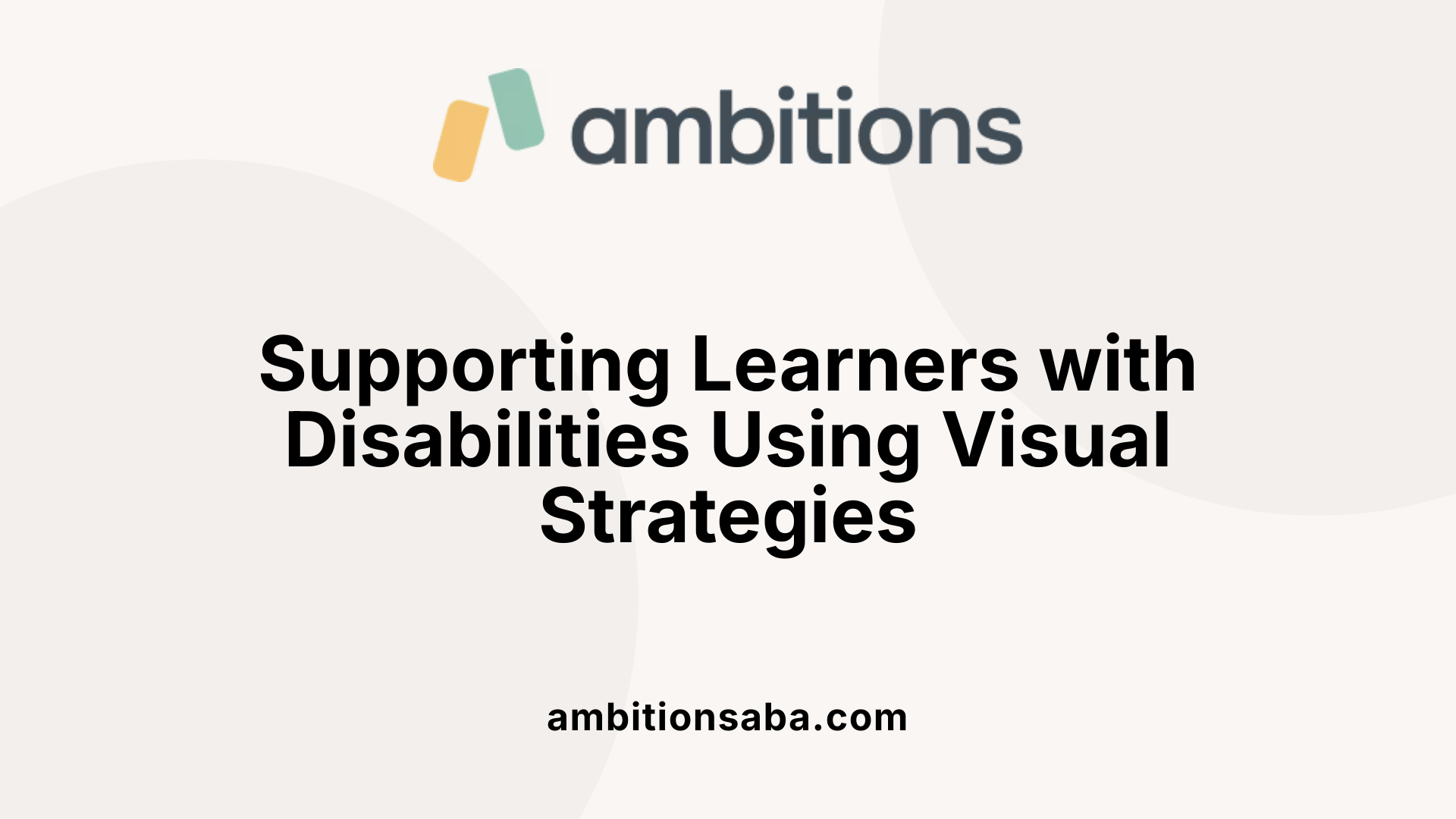
How can visual tools support students with learning disabilities in developing problem-solving skills?
Visual aids such as diagrams, flowcharts, schematic diagrams, and other visual models play a crucial role in helping students with learning disabilities grasp complex mathematical and problem-solving concepts. These tools translate abstract ideas into tangible visuals, making relationships between numbers, steps, and operations clearer. For example, visual models like tape diagrams or bar models allow students to visualize part-whole relationships, which enhances their understanding of addition, subtraction, fractions, and ratios.
Using visual representations also supports retention and recall. When students see information organized visually, they can better remember steps and recognize patterns. Visual tools can reduce cognitive overload by breaking down multi-step problems into manageable parts, making it easier for students to follow and solve problems.
Effective teaching blends these visuals with explicit instruction, clear demonstrations, and constructive feedback. Role-playing activities and "Say, Ask, Check" strategies further reinforce understanding by encouraging active engagement and self-assessment. Technology—such as virtual manipulatives or interactive diagrams—and real-world simulations personalize learning experiences, fostering motivation and relevance.
A holistic approach, combining visual aids with individualized support and ongoing assessment, empowers students with learning disabilities to develop stronger problem-solving skills. This integrated method addresses both cognitive challenges and behavioral needs, promoting independence and confidence.
Additional Resources
| Visual Tool | Purpose | Example | Benefits |
|---|---|---|---|
| Diagrams and models | Simplify complex info | Tape diagrams, schematic diagrams | Clarify relationships, enhance understanding |
| Flowcharts | Sequence of steps | Decision trees, process maps | Organize thinking, guide problem solving |
| Digital simulations | Interactive engagement | Virtual labs, interactive whiteboards | Personalize learning, increase motivation |
| Graphic organizers | Structuring ideas | Concept maps, T-charts | Facilitate understanding, recall |
More information can be found by searching "Visual support strategies for students with learning disabilities." Emphasizing these visual tools within a comprehensive teaching framework can make a substantial difference in supporting diverse learners.
Practical Resources and Lesson Plans for Visual Problem-Solving
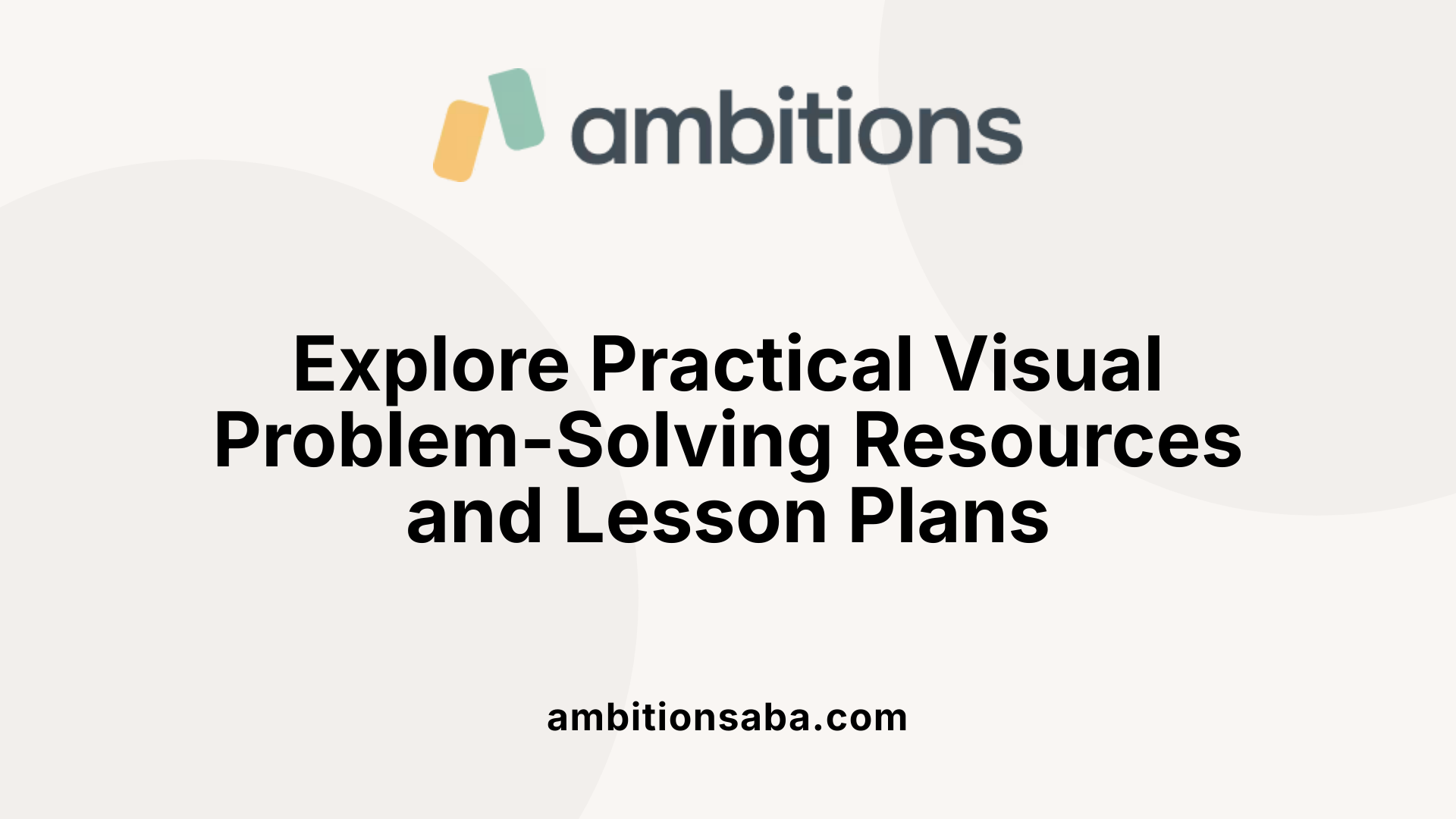
Are there resources or lesson plans available for teaching problem-solving with visual aids?
Yes, educators have access to a wide array of resources and structured lesson plans designed to teach problem-solving through visual strategies. Many educational websites offer free, ready-to-use materials such as posters illustrating each step in the problem-solving process, including identifying the problem, brainstorming options, evaluating solutions, and choosing the best approach.
These resources support teachers in developing engaging lessons tailored to elementary and middle school learners. Classroom posters, visual aids, and step-by-step guides help students internalize a systematic approach to solving problems.
Lesson plans often incorporate modeling techniques where teachers demonstrate thinking aloud while using visual tools. Interactive activities and games are integral, such as puzzles, pattern recognition exercises, and lateral thinking tasks, which challenge students to apply their visual problem-solving skills actively.
Printable visual cards and templates are also widely available, providing students with manipulatives and visual cues they can organize and manipulate to understand problem relationships better.
Furthermore, digital tools—such as slide decks, interactive whiteboard activities, and online brain teasers—enhance visual learning. These digital resources foster collaboration and allow students to experiment with different problem-solving strategies dynamically.
Overall, these carefully designed resources and lesson plans cultivate critical thinking, enhance comprehension, and make learning problem-solving enjoyable and accessible through the power of visuals.
Visual Supports for Social-Emotional Skills and Behavior Management
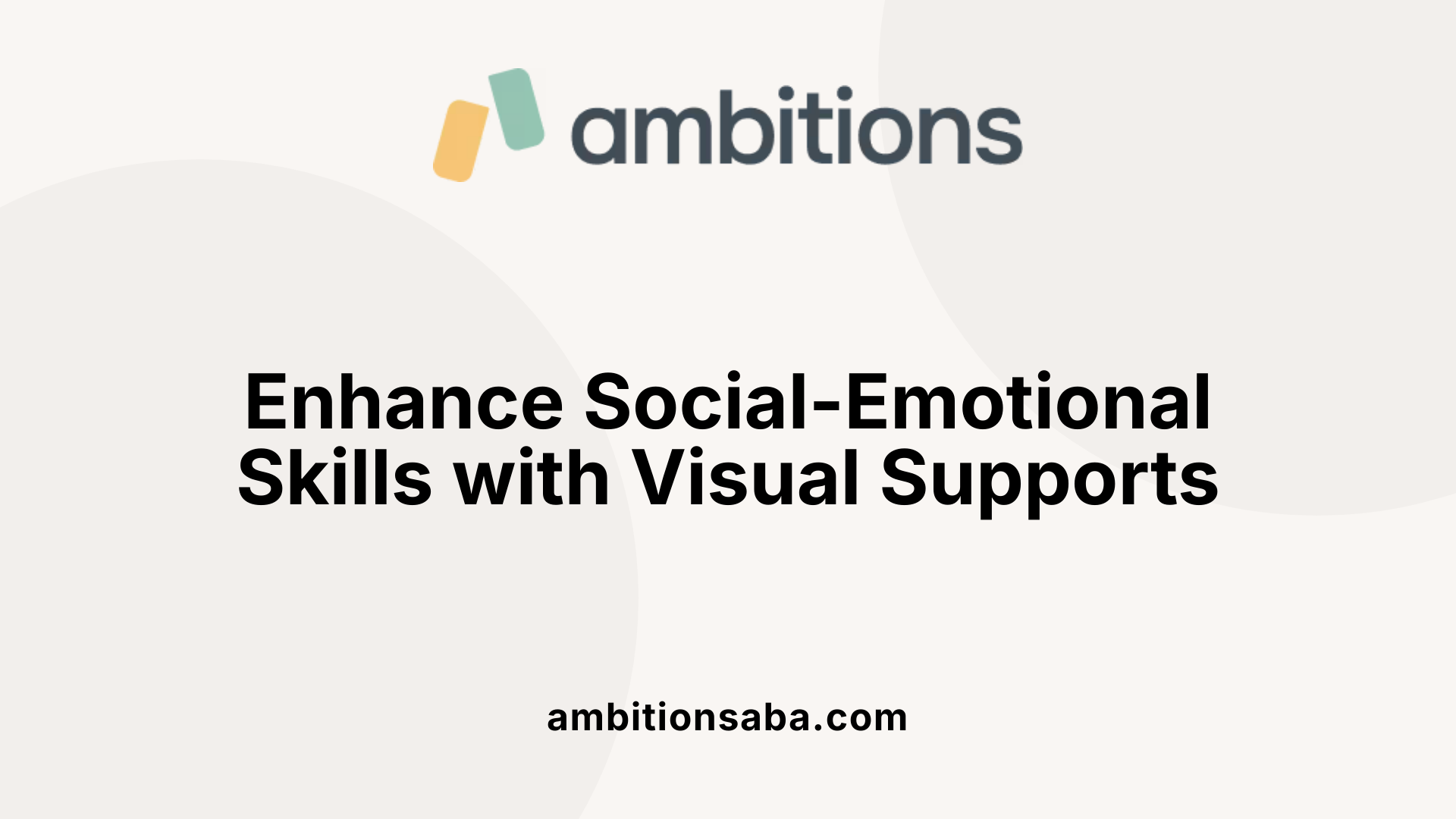
How can visual strategies support social-emotional skills and behavior management?
Visual strategies play a vital role in fostering social-emotional skills and managing student behaviors effectively. By providing concrete, visual representations of abstract ideas such as emotions, social rules, and routines, these strategies make complex concepts more tangible and understandable.
For example, emotion charts with faces depicting different feelings help students recognize and label their own emotions and those of others. This awareness is the first step toward emotional regulation and empathy. Visual cues like social stories illustrate appropriate social interactions and expected behaviors, guiding children in navigating social situations smoothly.
Visual supports also contribute to establishing predictable routines and transitions, which can significantly reduce anxiety and prevent behavior challenges. Visual schedules and cue cards clarify what is expected, helping children anticipate upcoming activities and manage their responses.
Furthermore, tools like choice boards and social cues promote independence by encouraging children to make decisions and express their feelings confidently. They also serve as prompts for reflection, supporting children in understanding their behavior and developing self-regulation skills.
In diverse settings—classrooms, homes, and community environments—visual supports are adaptable. They facilitate communication, reinforce social norms, and promote positive interactions. Overall, integrating visual strategies creates a more inclusive and supportive environment that nurtures emotional awareness, social competence, and positive behavior development.
Embracing Visual Strategies Leads to Holistic Growth
The effective integration of visual strategies into problem-solving education offers a comprehensive method to engage learners, support diverse needs, and develop essential skills. By leveraging visual tools—ranging from diagrams and graphic organizers to digital media—educators can clarify complex concepts, foster critical thinking, and promote independence. Visual supports not only enhance academic understanding but also bolster social-emotional skills and positive behaviors across various settings. As research consistently underscores their effectiveness, adopting these approaches can transform classrooms into vibrant, inclusive environments where all students thrive. Embracing visual strategies paves the way for lifelong problem-solving confidence and success.
References
- [PDF] Effective Problem-Solving Instruction, Part 1: Visual Representations
- Page 5: Visual Representations - IRIS Center
- Visual Teaching Strategies to Improve Learning - Lucid Software
- Visual Models: Your Secret Weapon for Word Problem ...
- How to Teach Visual Learners - 10 Effective Ways - SplashLearn
- Teaching the Problem-Solving Process: Free Poster & Lesson Plan ...
- [PDF] Using Visual Representations - Institute of Education Sciences
- Visual Supports | HeadStart.gov
- 6 Proven Visual Learner Strategies For Students - Alexander Tutoring
- Practical Strategies - National Center for Pyramid Model Innovations

